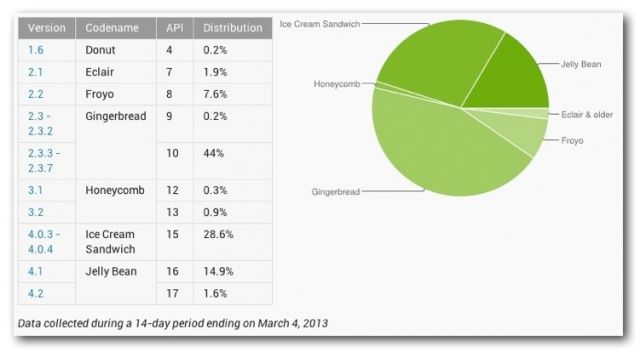Slowly But Surely, Jelly Bean Is Grabbing More Market Share
Google’s latest Jelly Bean platform has been available for just under eight months now, but like its predecessors, it’s been slow to make its way to Android smartphones and tablets. That’s not Google’s fault — it’s own Nexus devices get the latest releases almost as soon as they’re available — but Android hardware manufacturers are, unfortunately, notoriously slow at updated their devices.
Nevertheless, Jelly Bean’s market share is growing. According to Google’s latest data, it’s now installed on 16.5% of devices.
Google collected data over a 14-day period ending on March 4, which proves that slowly but surely, Jelly Bean is making its way to more devices. In comparison, Google’s February report showed that the platform was installed on 13.6% of devices, which means it’s grabbed an additional 2.9% in a month.
That sounds good, but when you compare Android to its biggest rival, iOS, it’s painfully slow. For instance, when Apple released iOS 6 — its most recent major iOS release — back in September 2012, it took just one month for it to reach 60% of iOS devices.
The difference, of course, is that Apple is in complete control of its iOS software, and it pushes it directly to its devices. Android, on the other hand, is tweaked by different manufacturers who add their own user interfaces, and then it has to be approved by carriers before it goes public.
Android 2.3 Gingerbread still commands most of the share at the moment, with 44.2%. Ice Cream Sandwich has 28.6%. Amazingly, Donut, Eclair, and Froyo still hold almost 10% of the share between them.
- SourceGoogle
- ViaTechnoBuffalo




